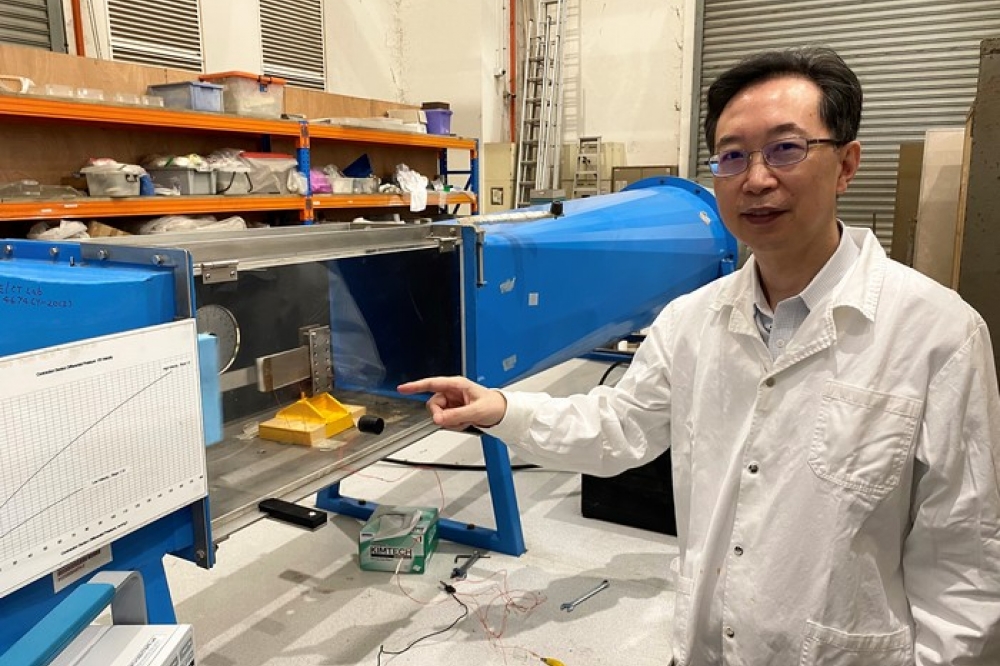Energy harvesting is a breeze

NTU Singapore scientists develop inexpensive device that can harvest energy from a light breeze and store it as electricity
Scientists from Nanyang Technological University, Singapore (NTU Singapore) have developed a low-cost device that can harness energy from wind as gentle as a light breeze and store it as electricity.
When exposed to winds with a velocity as low as two metres per second (m/s), the device can produce a voltage of 3V and generate electricity power of up to 290µW, which is sufficient to power a commercial sensor device and for it to also send the data to a mobile phone or a computer.
The light and durable device, called a wind harvester, also diverts any electricity that is not in use to a battery, where it can be stored to power devices in the absence of wind. The findings 'A cantilever-type vibro-impact triboelectric energy harvester for wind energy harvesting' were published in the scientific peer-reviewed journal Mechanical Systems and Signal Processing in September.
The device is made of fibre epoxy, a highly durable polymer, with the main attachment that interacts with the wind made of inexpensive materials, such as copper, aluminium foil, and Teflon. Due to the dynamic design of its structure, when the harvester is exposed to wind flow, it begins to vibrate, causing its plate to approach to and depart from the stopper. This causes charges to be formed on the film, and an electrical current is formed as they flow from the aluminium foil to the copper film.
In laboratory tests, the NTU-developed harvester could power 40 LEDs consistently at a wind speed of 4 m/s. It could also trigger a sensor device, and power it sufficiently to send the room temperature information to a mobile phone wirelessly.
Measuring 15 cm by 20 cm, the device can be mounted on the sides of buildings, and would be suitable for urban environments, such as Singaporean suburbs, where average wind speeds are less than 2.5 m/s, outside of thunderstorms.
Project leader Yang Yaowen (pictured above with the device in a wind tunnel), a structural engineer from NTU’s School of Civil and Environmental Engineering, said: “As a renewable and clean energy source, wind power generation has attracted extensive research attention. Our research aims to tackle the lack of a small-scale energy harvester for more targeted functions, such as to power smaller sensors and electronic devices. The device we developed also serves as a potential alternative to smaller lithium-ion batteries, as our wind harvester is self-sufficient and would only require occasional maintenance, and does not use heavy metals, which if not disposed of properly, could cause environmental problems.”
Yang added: “Wind energy is a source of renewable energy. It does not contaminate, it is inexhaustible and reduces the use of fossil fuels, which are the origin of greenhouse gasses that cause global warming. Our invention has been shown to effectively harness this sustainable source of energy to charge batteries and light LEDs, demonstrating its potential as an energy generator to power the next generation of electronics, which are smaller in size and require less power.”
The NTU team will be conducting further research to further improve the energy storage functions of their device, as well as experiment with different materials to improve its output power. The research team is also in the process of filing for a patent with NTUitive, NTU’s innovation and enterprise company.



































